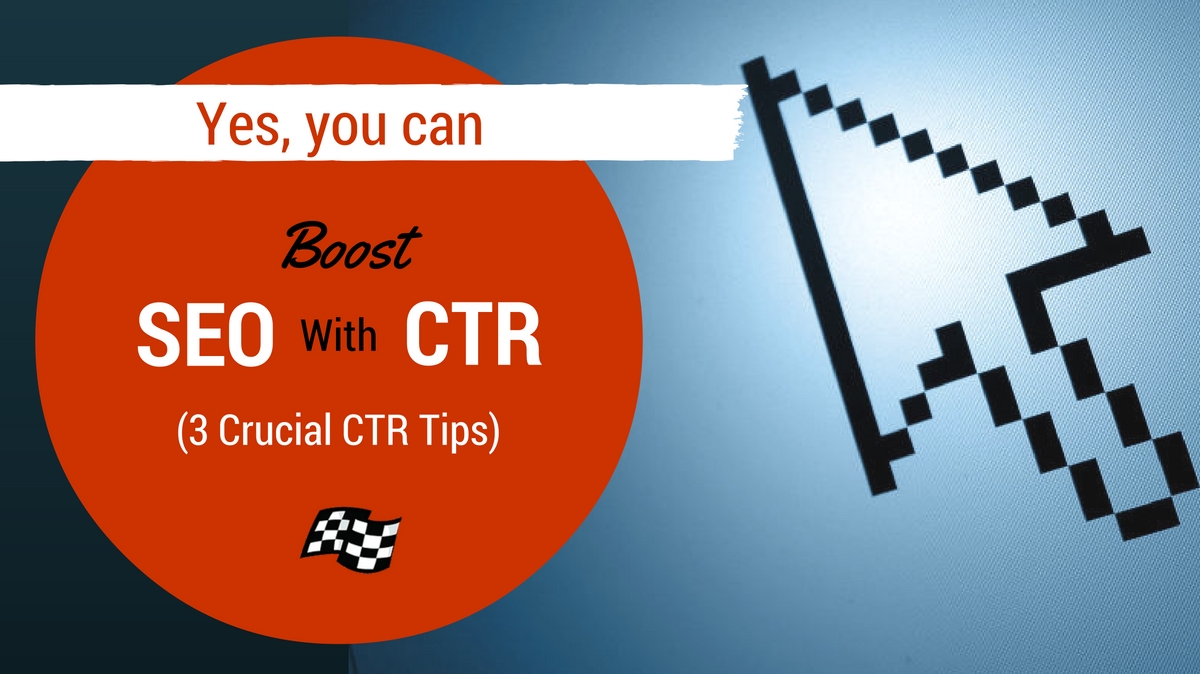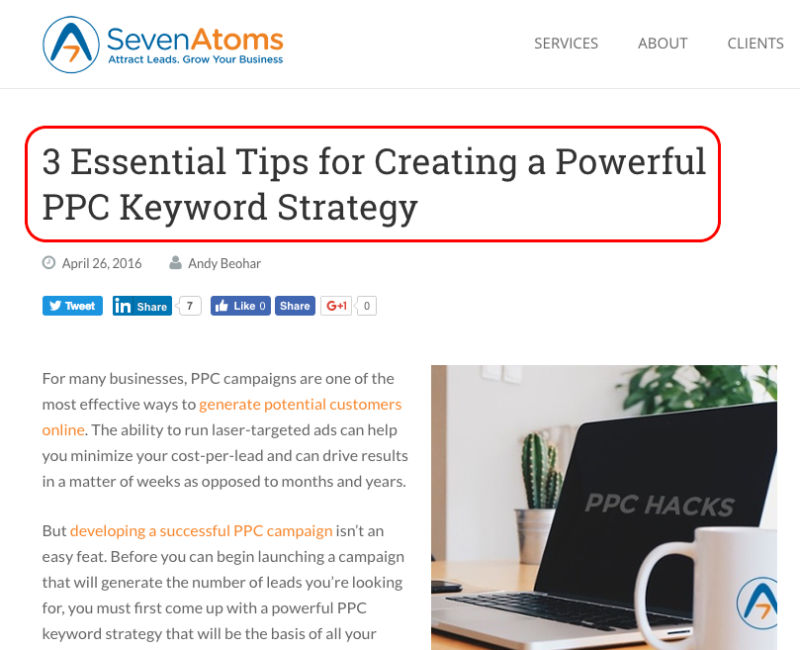
There are some obvious reasons why Click-Through Rate (CTR) is a crucial measurement to track. For starters, it’s a good way to monitor whether or not you’re getting sufficient visibility and engagement for your page. But there is a less obvious benefit that many marketers either overlook or dismiss: Better SEO.
Reports shows that a high CTR could mean higher rankings for your page in search queries. While there has been some conjecture over the matter in recent years, there is definitely evidence to support that CTR is at least an indirect ranking factor for SEO. In this post, we’ll go over reasons for the debate, some of the evidence that supports CTR as a positive impact on SEO, as well as a few practical tips for how you can begin to improve your CTR. Let’s get started!
The Debate
Unfortunately, Google has been, to put it lightly, reluctant to reveal the innards of their algorithms. However, that doesn’t mean we can’t deduce an answer ourselves by measuring and testing the evidence. People have debated whether or not CTR is an important factor for SEO. But it’s not so much a matter of if it boosts SEO efforts, but to what degree. Basically, is it a direct or indirect ranking factor?
As former Google engineer Edmond Lau said, “It’s pretty clear that any reasonable search engine would use click data on their own results to feed back into ranking to improve the quality of search results. Infrequently clicked results should drop toward the bottom because they’re less relevant, and frequently clicked results bubble toward the top.”
Elements of CTR and How it Affects SEO

CTR is a percentage determined by the number of times a page is clicked divided by the number of times it is shown. The higher your CTR, the more likely it is that your page is relevant to your audience.
Rand Fishkin, co-founder of Moz, had a hunch that Google was taking CTR into consideration when determining Search Engine Result Page (SERP) rankings. He noticed that a blog post he’d published was ranking in the seventh position on Google. After taking a screenshot, he Tweeted a message to his 335,000 Twitter followers: “Care to help with a Google theory/test? Could you search for “IMEC Lab” in Google & click the link from my blog? I have a hunch.”
After an overwhelming response, Rand checked on his post again just a few hours later–it was at the top of the list.
While it’s important to note that Rand’s experiment doesn’t necessarily prove anything, it is a fantastic indicator that Google must be taking CTR into account when it comes to search ranking. I think we can agree that the more traffic you get to your site, the better your ranking will be. So, it stands to reason that a higher CTR (which means more people clicking through to your site) will indirectly lead to improved SEO efforts.
We can also take a look at SEO expert David Butler’s experiment, in which he tested the effects of clickbots and their contribution to SERP placement. (Let’s note that ordinarily I don’t recommend using clickbots–however, for the purposes of this experiment, I’ll let it slide). Over a six-week period, Butler used the bot on keywords that were ranking below the 30th position on Google. Generating a modest amount of traffic from the bots so that the activity wouldn’t be flagged by Google, Butler saw immediate improvement. And, with the increase in his SERP rankings, his organic traffic increased over 150 percent!
CTR Tips to Improve Your SEO Efforts
So we’ve talked a good amount about why you need a “high” CTR–but what is that considered to be? The truth is that CTR is going to vary a lot from industry to industry; there is no magic number that we all must aspire to. Still, with a few best practices and thorough data analysis, you’ll be able to raise your CTR considerably. We’ve put together a few tips that will help increase your CTR and, in turn, positively impact your SEO:
1. Create Alluring Headlines
Creating a great title will help you stand out amongst the SERP crowd. Focus on crafting titles that cause an emotional reaction. Make them funny, sad, inspiring–whatever compels searchers to click through to your page. These types of headlines do a great job of increasing CTR. Remember, the title is the first thing most searchers see and pay attention to. You need to make it count.
You should also try pairing emotional titles with other popular formats like numbered lists and title tag modifiers. Tag modifiers, such as “awesome” and “essential,” are words that add click value to your title. In other words, these are terms that make your reader feel like they’re going to seriously miss out on something if they don’t click.
Numbered lists are also a great way to increase CTR. This is in part because they automatically make your post stand out as organized, result-oriented, and easy to read. Interestingly, there’s evidence to suggest that you can generate even more traffic by using odd numbered lists (ex: 9 Incredible SEO Tips).
Another method to try is creating titles that give readers a glimpse at the type of content they’ll see. Is your post a gallery of images? An infographic? A quiz? For example, check out this title: “27 Hilarious Images of Adorable Kittens that Will Make You Smile.” We’ve got an odd number, a tag modifier, the type of content, and emotion. It’s a super-title!
The main rule you’ll have to keep in mind when crafting your own super-titles is that they shouldn’t be any longer than 65 characters (including spaces). Titles longer than this may be truncated by Google. We don’t want that, do we? *Shakes head vigorously*

2. Get to Work on Your Meta Descriptions
When deciding on which search result to click, the headline is your most important asset. However, users also look at meta descriptions–the short copy listed beneath your title. Be brief (descriptions over 160 characters may be cutoff by Google) but make sure to include relevant and tempting information that will let people know that your page has what they’re looking for.
But while meta descriptions should be enticing, they also need to be truthful–don’t promise diamonds if you only have crystals. In other words, use positive language and encourage people to click without being unrealistic about the expectations of your content. Misleading searchers will not only cause them to bounce from your page (which will harm your search value), but will also deter them from visiting in the future.
A good meta description will generate more clicks to your page, resulting in higher CTR, which then leads to better search value. Also, even though it won’t affect SEO directly, you could also include the main keyword in your meta description–seeing the main keyword may indicate relevancy to searchers.
You can also use your meta description as a Call-to-Action (CTA). Let users know that by clicking your page they’ll get something great in return:
“Discover how you can increase traffic by implementing these simple SEO tips.”
Or:
“Explore these top tips for SEO and find out how you can boost traffic to your page.”
Or:
“Download our FREE mega-guide and learn how to write awesome blog titles that will boost traffic to your site.”
See how this meta description lets the searcher know exactly what they’ll receive when they click? Also, it’s formatted so that it doesn’t get truncated by Google.

Using these tips when writing your meta descriptions will help you increase the CTR to your page and boost its position on Google’s SERP.
3. As Always, You MUST A/B Test

As with most marketing practices, A/B testing is necessary in order to determine how to best optimize your pages for higher CTR. Each time you make a title change or add a new meta description, monitor the data closely to see if it results in more page visits.
For example, let’s say you change your blog title from “Great Tips for Better Search Value” to “35 Super Easy Tips to Help You Rank in the Top 10 Google Results.” At the same time, you decide to change your meta description from “These tips will help you increase your rank position on Google” to “These incredibly simple tips will boost your search position in no time.” After a short while, you suddenly see a huge jump in your CTR. It’s safe to say that you did something right. But what was it? The meta description? The title? A combination of both?
Even though you saw a jump in CTR, there was one flaw in your process: When A/B testing, you need to be sure not to make too many changes at once. If you alter your title and meta description at the same time and see an improvement in CTR, you won’t know for sure which change was responsible. Testing changes individually will help you better pinpoint the cause so you can apply those same changes again.
Get to Work
By implementing these simple tips, you’ll be able to start increasing your CTR and improving your SEO and ROI. There’s going to be a bit of work involved, but don’t let that scare you off. And remember: while CTR may only be an indirect factor to improving SEO efforts, it’s still well worth your while.

One Response to Yes, You Can Boost SEO with CTR (3 Crucial CTR Tips)